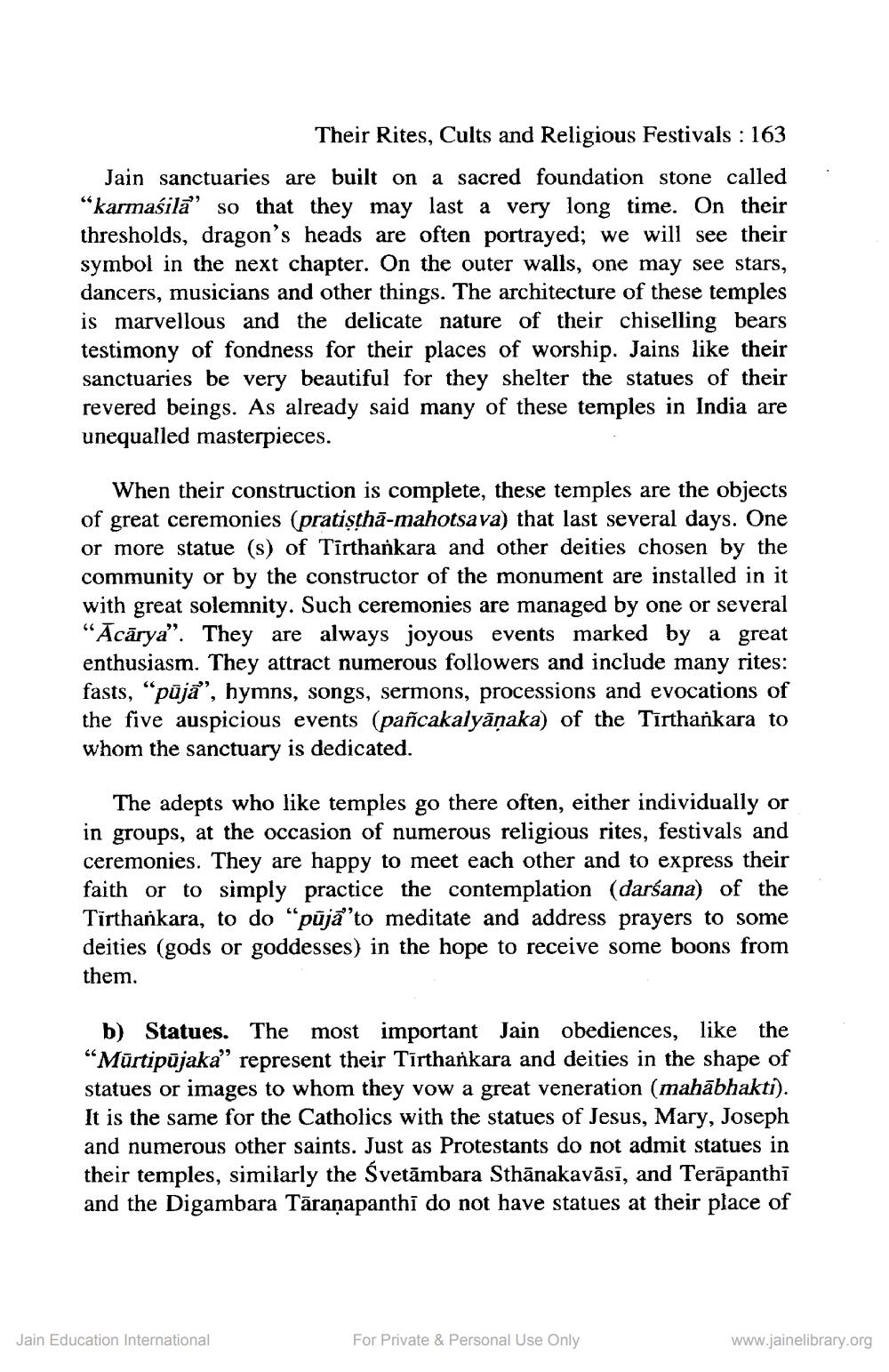________________
Their Rites, Cults and Religious Festivals : 163
Jain sanctuaries are built on a sacred foundation stone called "karmaśilā" so that they may last a very long time. On their thresholds, dragon's heads are often portrayed; we will see their symbol in the next chapter. On the outer walls, one may see stars, dancers, musicians and other things. The architecture of these temples is marvellous and the delicate nature of their chiselling bears testimony of fondness for their places of worship. Jains like their sanctuaries be very beautiful for they shelter the statues of their revered beings. As already said many of these temples in India are unequalled masterpieces.
When their construction is complete, these temples are the objects of great ceremonies (pratişthā-mahotsava) that last several days. One or more statue (s) of Tirthankara and other deities chosen by the community or by the constructor of the monument are installed in it with great solemnity. Such ceremonies are managed by one or several “Ācārya”. They are always joyous events marked by a great enthusiasm. They attract numerous followers and include many rites: fasts, "pūja", hymns, songs, sermons, processions and evocations of the five auspicious events (pañcakalyāņaka) of the Tīrthankara to whom the sanctuary is dedicated.
The adepts who like temples go there often, either individually or in groups, at the occasion of numerous religious rites, festivals and ceremonies. They are happy to meet each other and to express their faith or to simply practice the contemplation (darśana) of the Tirthankara, to do “pūjā''to meditate and address prayers to some deities (gods or goddesses) in the hope to receive some boons from them.
b) Statues. The most important Jain obediences, like the “Mūrtipūjaka” represent their Tīrtharkara and deities in the shape of statues or images to whom they vow a great veneration (mahābhakti). It is the same for the Catholics with the statues of Jesus, Mary, Joseph and numerous other saints. Just as Protestants do not admit statues in their temples, similarly the Svetāmbara Sthānakavāsī, and Terāpanthi and the Digambara Tāranapanthi do not have statues at their place of
Jain Education International
For Private & Personal Use Only
www.jainelibrary.org




